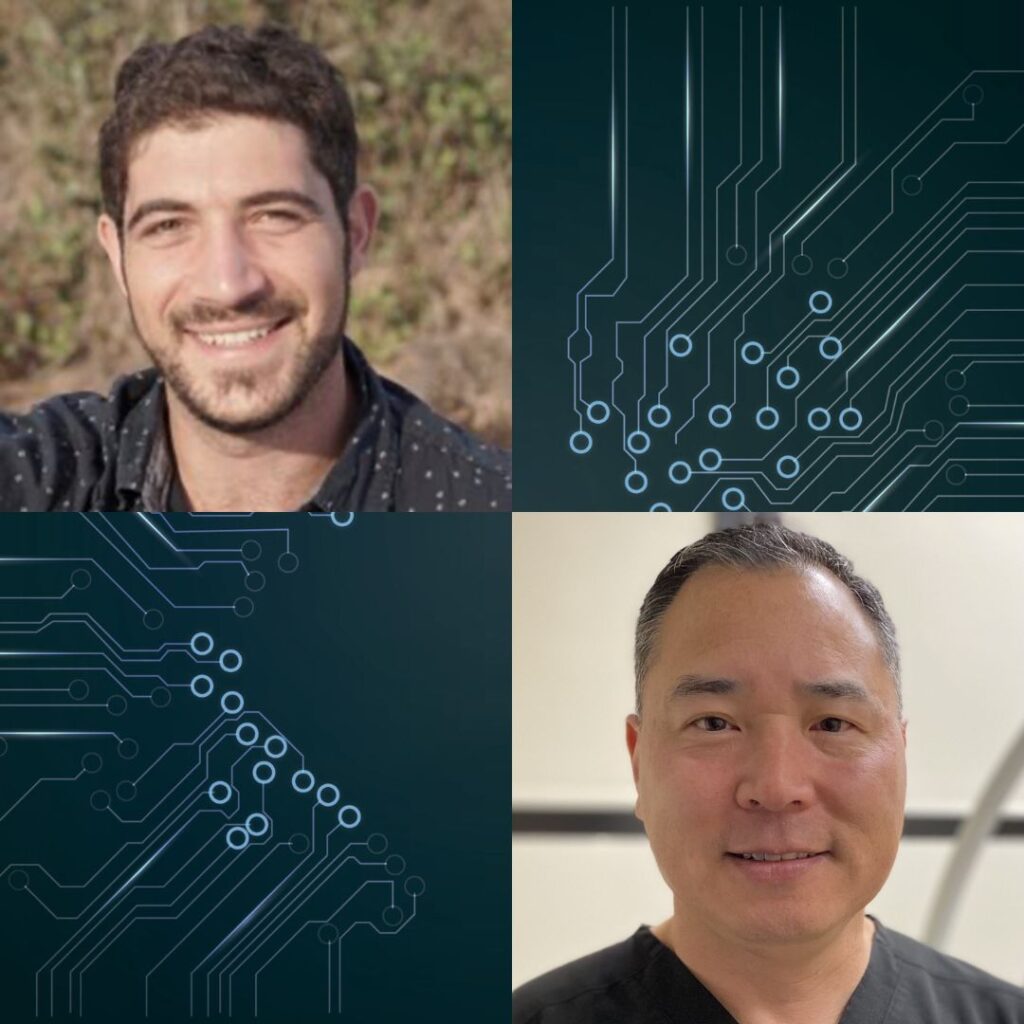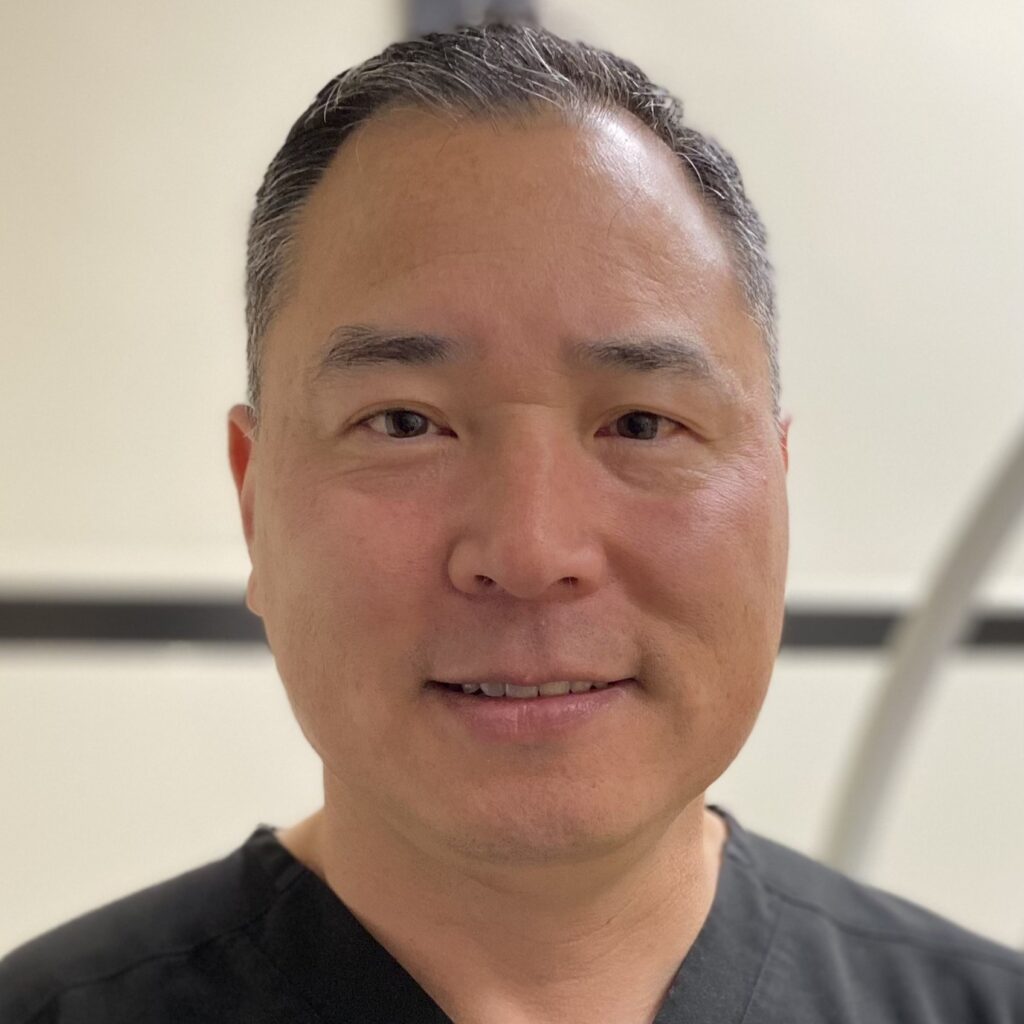
Skin-like wearables and materials considerations
We welcome you to join us in-person and on Zoom for our October eWEAR Seminar.
Date: Monday, October 23rd from 12:30 pm to 1:30 pm PDT
Location: Stanford University (Y2E2 Building, Room 299 parking details below) & on Zoom
Lunch will be provided at 12:00pm for in-person attendees & a chance to talk with the speakers after the seminar.
Registration: Please click here to register
Speakers:
Sam Root, Ph.D.
12:30 pm to 1:00 pm
“Autonomous alignment and healing in multilayer soft electronics using immiscible dynamic polymers”
Bryan Cho, M.D., Ph.D.
1:00 pm to 1:30 pm
“What makes wearable devices and flexible electronics safe and comfortable”

Sam Root
Postdoctoral Scholar, Chemical Engineering, Stanford University
BioSam Root is from Long Island, New York. He earned his bachelor’s in chemical engineering at the University of Rochester in 2014. He completed his PhD in chemical engineering at University of California, San Diego (2018) with Darren Lipomi, where he investigated the mechanical behavior of semiconducting polymers. He spent three years as a postdoc with George Whitesides at Harvard University investigating polymer materials for biomedical soft robotics and mechanisms of charge transport through self-assembled monolayers. He is currently a postdoc with Zhenan Bao at Stanford University investigating interfaces of immiscible dynamic polymers and their functional composites for damage-sensing electronic skins.
Self-healing soft electronic and robotic devices, like human skin, can recover autonomously from some forms of damage. Existing multi-layer devices generally employ a single type of dynamic polymer embedded with different functional nano–micro materials in each layer, to provide a cohesive interface between layers. In such devices, successful healing from damage requires precise manual alignment and re-contacting of the fractured interfaces, limiting functional recovery from diverse forms of damage, such as processes leading to imperfect registry of device layers. These limitations are especially prevalent for devices containing thin layers (< 100 µm). To overcome these limitations, we have designed a pair of dynamic polymers, which have immiscible polymer backbones (poly(dimethylsiloxane) and poly(propylene glycol)), but identical dynamic bonding units (a mixture of strong and weak bisurea-based hydrogen bonding interactions). This strategy allows for the maintenance of interlayer adhesion, while providing selectively self-healing layers with similar viscoelastic behavior (and thus self-healing dynamics) over a convenient range of temperatures (25–100°C). Upon lamination, these dynamic polymers exhibit a weakly interpenetrating and adhesive interface, whose width and toughness are reversibly tunable with processing temperature. When multilayered polymer films are misaligned after damage, these structures autonomously realign during the healing process. We propose a mechanism in which the polymer chains diffuse along gradients of chemical potential to minimize overall interfacial free energy of the layered system. Our experimental observations are captured by both coarse-grained molecular dynamics simulations and continuum phase field simulations, providing evidence of the proposed mechanism, and suggesting generality of the observed phenomenon to other pairs of polymer backbones or reversible bonding chemistries. As a demonstration of the potential utility of our approach, we fabricated several demonstrative devices with conductive, dielectric, and magnetic particles that functionally heal after damage, enabling thin film pressure sensors, magnetically assembled soft robots, and underwater circuit assembly. Moving forward, we expect that the improved capacity for functional recovery of such multilayered devices will open the door for entirely new applications such as damage-sensing electronic skins.

Bryan Cho, M.D., Ph.D.
CEO & Founder, BOHLD Consulting LLC; Board-certified Dermatologist
BioDr. Bryan Cho completed UCSF Dermatology residency in 2005 and remained at UCSF as a clinical instructor. He then moved to Palo Alto Medical Foundation (PAMF) as a general dermatologist in 2007 where he is an active medical provider. He began consulting with technology and medical device companies in 2014 and has worked with several leaders in the wearable technology field. In 2022, he founded and became CEO of BOHLD Consultants.
BOHLD is a dermatology consultancy focused on providing dermatologic expertise to medical and technology companies whose devices interface with the skin. It specializes in identifying root causes for skin irritation but also ways to ensure safety and comfort of devices worn on and within the skin.
Dr Cho has a BS in Chemistry from Stanford University, a PhD in Biochemistry from Univ of Illinois Urbana-Champaign, completed three postdoctoral fellowships in Immunology (MIT, Univ of Illinois Urbana-Champaign, UCSF). In 2013, he completed an ABLS board certification in Laser Surgery. Although he primarily operates BOHLD consulting, he continues at PAMF running a weekly laser specialty clinic. He is a member of the American Academy of Dermatology, American Contact Dermatitis Society and American Society for Laser Medicine and Surgery.
Wearable devices can incorporate cutting-edge technology and be designed brilliantly but if they cannot be worn safely and comfortably for their intended purpose they are unlikely to be widely embraced. This talk will describe what it means to use biocompatible materials and why this can erroneously make one assume the device can be worn on the skin safely. Allergens that have been identified with wearable devices will be reviewed to help identify potential future roadblocks. Even when all biocompatibility criteria are met, other human factors and material properties can impact device tolerability. Parameters to optimize skin tolerance and comfort will be presented.
Parking Details
Seminar Location: Y2E2 Building, Room 299 (473 Via Ortega, Stanford, CA 94305, Y2E2 Building)
Garage/Lot Options:
Via Ortega Garage: 498 Via Ortega, Stanford, CA 94305 (Map from garage to seminar location enter Y2E2 building by Coupa Cafe)
Rates:
Per hour = $4.46
Day pass = $35.68
The following three options are available to pay for parking:
- Download the app and set up a Park Mobile account. It is recommended to do this before coming to campus.
- Pay Online (No app or account needed): Navigate to app.parkmobile.io/zone/start or text PARK to 77223 and follow the steps to pay.
- Pay-By-Phone if you don’t have a smartphone or prefer an automated voice system, call ParkMobile at 877.727.5718 to start your parking session.
Safety Protocol: Stanford University Covid-19 Policies. Stanford strongly recommends masking indoors and in crowded outdoor settings.
